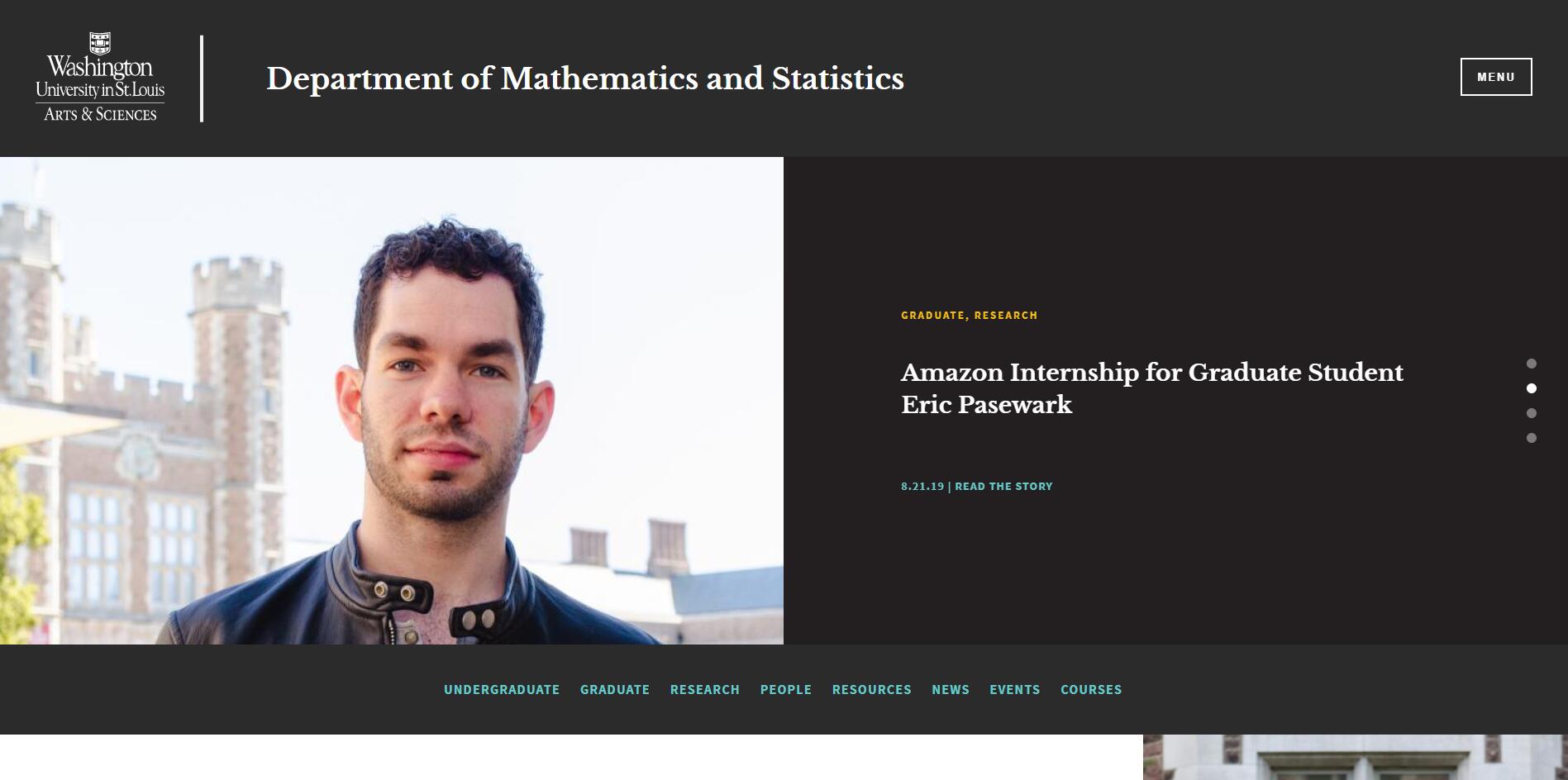Offers latest ranking of top schools for mathematics in Missouri. You can learn what the top-ranked math colleges and universities are in Missouri, and compare the best math colleges on TopSchoolsintheUSA.com. Search the top graduate schools in math, view school profiles, and contact information for all 4 mathematics colleges in Missouri.

| School Rank | Graduate Mathematics |
| 1 | Washington University in St. Louis Department of Mathematics Address: 1 Brookings Drive, St. Louis, MO 63130-4899 Admissions Phone: (314) 935-6760 Admissions E-mail: leslie@math.wustl.edu Admissions Website: http://www.math.wustl.edu |
| 2 | University of Missouri Department of Mathematics Address: 225A Mathematical Sciences Building, Columbia, MO 65211 Admissions Phone: (573) 882-4926 Admissions E-mail: muasmathdgs@missouri.edu Admissions Website: http://www.math.missouri.edu |
| 3 | Missouri University of Science & Technology Department of Mathematics and Statistics Address: 400 W. 12th Street, Rolla, MO 65409-0020 Admissions Phone: (573) 341-4641 Admissions E-mail: vsam@mst.edu Admissions Website: http://math.mst.edu |
| 4 | University of Missouri–Kansas City Department of Mathematics and Statistics Address: 5120 Rockhill Road, Kansas City, MO 64110-2499 Admissions Phone: (816) 235-1641 Admissions E-mail: umkcmathdept@umkc.edu Admissions Website: http://cas.umkc.edu |
Arch “Gateway to the West”
It was planned to begin the construction of the arch in 1950, on June 10, with the participation of US President Harry Truman, the laying ceremony of the monument was held, but due to the outbreak of the Korean War, construction was postponed.
In the late fifties, one of the developers in St. Louis decided to build two forty-story buildings next to the future monument. This caused concern, as new skyscrapers could deprive the planned arch of dominating the site, as intended by the architect. As a result of lengthy discussions, the city authorities limited the height of structures erected in the area of the memorial, and the projected height of the arch was slightly increased.
A competition was held to determine the contractor, which was won by MacDonald Construction of St. Louis.
Before starting the construction of the monument, it was necessary to move the railway tracks passing through the plot of land allotted for it. Various options were considered, in the end it was decided to “hide” the railway in the tunnel. Work on its construction began in 1959.
In 1961, they began to dig a foundation pit for the actual arch, and on February 12, 1963, the construction of a metal structure began. Both of its branches were collected simultaneously from sections about 3.7 meters long each (a total of one hundred and forty-two were used). After installing each section, reinforcement was fastened inside it and the space between the steel sheets was poured with concrete (up to a height of 93 meters).
The construction of such an unusual monument aroused great interest. Thousands of people came to view the construction site, and local radio stations covered the progress of the work. There were also skeptics among the public who did not believe in the success of the engineers and even successively filmed the stages of construction, expecting that the branches of the arch would not coincide at the top point with each other.
The arch was scheduled to be completed in 1964, in time for the St. Louis bicentennial celebrations, but construction took longer. Finally, on October 28, 1965, the last, “closing” section was mounted, in which a “time capsule” was placed with the signatures of 762,000 people.
The author of the project that later became the famous arch “Gateway to the West” Eero Saarinen did not see the embodiment of his plans in metal, he died on September 1, 1961.
Although the official opening ceremony of the monument, which was attended by US Vice President Hubert Humphrey, was held only on May 25, 1968, already on June 10, 1967, the arch was opened to visitors, and from July 24 of the same year, tourists were able to climb to its top. In the first year alone, more than six hundred thousand people visited the unusual monument.
Those wishing to see the city and the river from a height of almost two hundred meters can climb the viewing gallery located at the top of the arch. Tourists are brought here by the original “funicular”, a system of two “trams” moving along rails with the help of ropes, each of which consists of eight five-seater cabins, wagons and moves to the top of the arch at a speed of about 6 km / h. The length of the “upper deck” of the monument is about twenty meters, the width is a little more than two, from it, through sixteen small (69 by 18 cm) windows, a stunning view of St. Louis and its environs opens.
